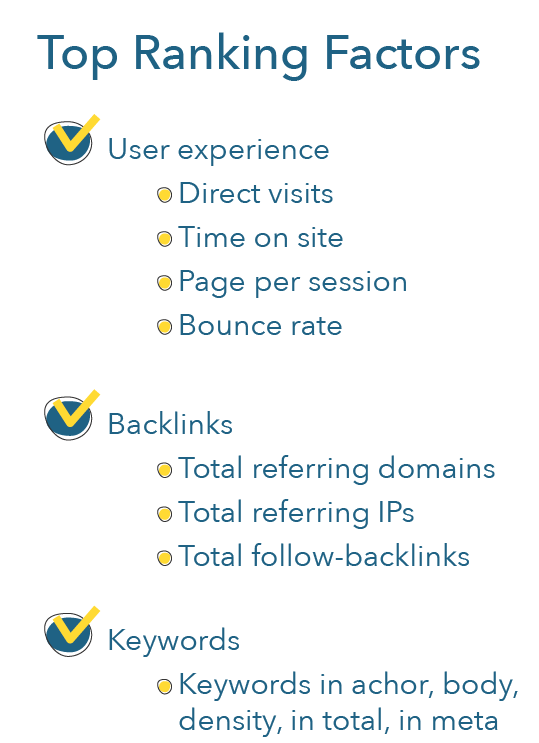Understanding Search Algorithms to Rank High
As shown by the video explaining how Google works, there are more than 200 variables that are taken into account when ranking websites. Some of them, though, are more important than others. Namely, we can identify three broad categories of highly important ranking factors (Figure 3.2):
- User experience
- Direct visits
- Time on site
- Page per session
- Bounce rate
- Backlinks
- Total referring domains
- Total referring IPs
- Total follow-backlinks
- Keywords
- Keywords in anchor, body, density, in total, in meta
Note: A backlink is a link back to your website from another domain. For example, www.othersite.com has a link somewhere on their website that links to www.yoursite.com.
Figure 3.2 Top Ranking Factors

Search engines use these three broad types of factors because they are trying to evaluate questions such as “For a specific search query, which website should I show first? Which should I show second?” And so on. Again, as a reminder, the goal of a search engine is to show websites in the order it believes will best answer the search query. As presented in the video, the role of search engines is to make users happy: If you can easily and rapidly find an answer to what you are looking for, you will continue to use this search engine. Your job, as a digital marketer, is thus to create pages that best answer the needs people have when they formulate specific search queries. This is the key general idea behind SEO.
But search engines cannot read the whole web to evaluate how well a webpage answers a search query. Rather, they base themselves on a set of variables to rank webpages. Webpages are ranked for each and every independent search query.
Let’s look at these three sets of factors one by one to understand how this affects our work as digital marketers.
